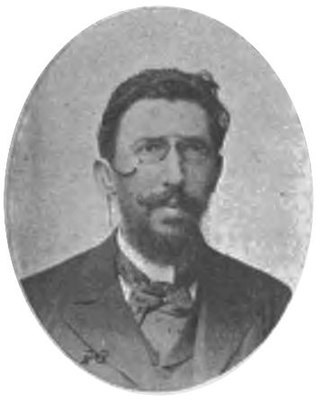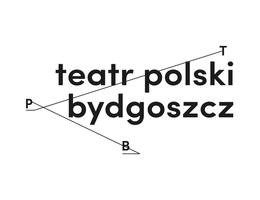This article needs additional citations for verification .(December 2021) |

![Rapacki as Hamlet, by
Karol Miller [pl] (1870) Miller Wincenty Rapacki as Hamlet.jpg](http://upload.wikimedia.org/wikipedia/commons/thumb/e/e0/Miller_Wincenty_Rapacki_as_Hamlet.jpg/215px-Miller_Wincenty_Rapacki_as_Hamlet.jpg)
Karol Miller (1870)
Wincenty Rapacki (22 January 1840, Lipno - 12 January 1924, Warsaw) was a Polish actor and theatre director.
This article needs additional citations for verification .(December 2021) |

![Rapacki as Hamlet, by
Karol Miller [pl] (1870) Miller Wincenty Rapacki as Hamlet.jpg](http://upload.wikimedia.org/wikipedia/commons/thumb/e/e0/Miller_Wincenty_Rapacki_as_Hamlet.jpg/215px-Miller_Wincenty_Rapacki_as_Hamlet.jpg)
Wincenty Rapacki (22 January 1840, Lipno - 12 January 1924, Warsaw) was a Polish actor and theatre director.
He lost his mother at an early age, and his father remarried. His step-family treated him poorly, so he spent much of his time away from home. This led to a fascination with travelling troupes, and his decision to become an actor. After leaving home, he finished his education in Płock then, when he was eighteen, enrolled at the drama school in Warsaw. Unable to find employment there, he went to Druskieniki where, in 1861, he made his début in Stare dzieje (Old History), a comedy by Józef Kraszewski.
The 1864/65 season found him in Lwów, and from 1865 to 1870 he was in Kraków. He became a voracious reader, and developed friendships among the intellectuals there, including Kraszewski, Alexander Fredro, Michał Bałucki, Karol Estreicher, and Jan Matejko, who painted his portrait. He also worked in Vienna and Paris; which exposed him to current trends in Western European theatre. In 1869, he performed 11 roles over the course of 37 days at the National Theatre, Warsaw; receiving high praise from the critics. In 1870, he found a permanent position there. During the 1875/76 season, he worked as a director. He also served as an acting teacher. After 1893, he was a lecturer in the diction and declamation class at the Warsaw Music Society .
Sometime in the early 1860s, he married the actress and singer, Józefina Hoffman . They had six children. Following her death in 1891, he married Amelia Gordon-Świejkowska (1868-1902). They had two sons. His children with Józefina included:
From 1919 until his death, he performed at the Warsaw Variety Theatre. In 1921, he became the first actor to be awarded the Order of Polonia Restituta. [1] That same year, he had a small part in Cud nad Wisłą (Miracle on the Vistula), an epic film by Richard Boleslawski.
In addition to acting, he wrote novels and plays, made translations, and adapted works for the stage; including Les Misérables , by Victor Hugo. He was a regular contributor to several magazines such as Kłosy , the Kurier Warszawski , and Tygodnik Ilustrowany . His extensive diaries were never published during his lifetime, and most were destroyed during the Warsaw Uprising. The surviving fragments were published in 1965.

Władysław Stanisław Reymont was a Polish novelist and the laureate of the 1924 Nobel Prize in Literature. His best-known work is the award-winning four-volume novel Chłopi.

Ida Kamińska was a Polish actress and director. Known mainly for her work in the theatre, she was the daughter of Avrom Yitshok Kaminski and Ester Rachel Kamińska, known as the Mother of the Jewish Stage. The Jewish Theatre in Warsaw, Poland is named in their honor. In her long career Kamińska produced more than 70 plays, and performed in more than 150 productions. She also wrote two plays of her own and translated many works in Yiddish. World War II disrupted her career, and she later immigrated to the United States where she continued to act. In 1967, she directed herself in the lead role of Mother Courage and Her Children on Broadway. In 1973, she released her autobiography, titled My Life, My Theater.
Janusz Korczak, the pen name of Henryk Goldszmit, was a Polish Jewish pediatrician, educator, children's author and pedagogue known as Pan Doktor or Stary Doktor. He was an early children's rights advocate, in 1919 drafting a children's constitution.

Józef Ignacy Kraszewski was a Polish novelist, journalist, historian, publisher, painter, and musician.

Wincenty Witos was a Polish statesman, prominent member and leader of the Polish People's Party (PSL), who served three times as the Prime Minister of Poland in the 1920s.

Stanisław Moniuszko was a Polish composer, conductor and teacher. He wrote many popular art songs and operas, and his music is filled with patriotic folk themes of the peoples of the former Polish–Lithuanian Commonwealth. He is generally referred to as "the father of Polish national opera". Since the 1990s Stanisław Moniuszko is being recognized in Belarus as an important figure to Belarusian culture as well.

Nicolas Chopin was a teacher of the French language in Partitioned Poland, and father of Polish composer Frédéric Chopin.

Edmund Bogdanowicz was a Polish poet, writer, and journalist.
Sergei Sergeevich Mukhanov was a Russian official, an officer in the Special Corps of Gendarmes, later also director of the Warsaw Theatre Directorate and second husband of the Polish pianist Maria Kalergis.

An Ancient Tale. Novel of Polish history - is a historical novel by popular 19th-century Polish writer Józef Ignacy Kraszewski published by Gebethner i Wolff in 1876 in Warsaw, then part of the Russian Empire. This work was the first novel in Kraszewski's long series of historical novels dealing with various periods in Poland's history. The second edition was published in 1879, in a lavishly illustrated form, with the plates done by then popular illustrator Michał Elwiro Andriolli. The manuscript of the novel was destroyed during World War II.

Wilton Lackaye was an American stage and film actor, who originated the role of Svengali in both stage and film.

Lea Koenig is an Israeli actress, nicknamed The First Lady of Israeli Theatre.

Jan Frycz is a Polish screen and stage actor. He was nominated for six Polish Academy Awards, winning twice for his supporting roles in the films Pornografia (2003) and The Welts (2004).

Andrzej Bogucki was a Polish television, stage and film actor, as well as operetta singer and songwriter, sometimes referred to as "The Polish Chevalier".

Antoni Fertner was a Polish stage actor and one of the earliest Polish film actors. His first film, Antoś pierwszy raz w Warszawie premiered October 22, 1908. It is the earliest surviving Polish feature film and considered to be the founding date of Polish Film. He is considered to be the first recognizable star of Polish Cinema. His favorite brand of comedy was farce, which with the help of musical comedy revived his career in the 1930s.

Henryk Bonawentura Kazimierz Weyssenhoff was a Polish landscape painter, illustrator and sculptor of Baltic-German ancestry.

Wincenty Smokowski, was a Polish-Lithuanian painter and illustrator in the Academic and Classical styles. He created portraits, historical scenes, landscapes and genre works; notably realistic, unprejudiced portrayals of Jews and Gypsies.

Józef Rapacki was a Polish painter, watercolorist and graphic designer; best known for his nostalgic landscapes of Mazovia.

The Polish theatre or Polish: Polski Teatr of Bydgoszcz has been established in 1949, at 2 Adam Mickiewicz Alley, in downtown district. It is the outcome of a long and rich tradition of plays and performance in the city.

Leopold Stanisław Kronenberg was a Polish banker, investor, and financier, and a leader of the 1863 January uprising against the Russian Empire.